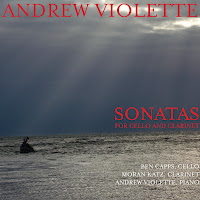There is something about the work of Chinese-American composer Tan Dun. If you become familiar with one or more of his works, then hear a new one, you tend to recognize the style, and it's not that of anybody else. There is gift for orchestration. Brilliant. And sound color. There is often a traditional Chinese influence, yes, but also of the world, India, Asia in general, but truly the world. There is almost a ritual quality to his music. The listening to it a kind of rite. It's his use of space, almost ceremonial. The horizontal quality of the development. Like a turtle? Yes, except no, not that the music is especially slow to get someplace. It is the way he gets there, deliberate, movements, stops, a side turn, a pause, then movement forward again, like a turtle. And the music is always about something--about the sound, about the imagery it may evoke.
These are the thoughts I have listening to his new Naxos disk, Tan Dun conducting his Concerto for Orchestra (2012) (Naxos 8.570608) along with his "Symphonic Poem on Three Notes" (2012) and "Orchestral Theatre" (1990). The Hong Kong Philharmonic is well rehearsed and extremely sympatico with this music. These are state-of-the-art performances, certainly. And the music?
All of it stands out. There is excellent use of percussion color and a masterfully original brilliance to the orchestral presence. The music embraces often some non-Western, non-classical phrasings and tonal modes, along with a very original take on modernity. The sonic and harmonic-melodic advances in music syntax made in the past 100 years are not abandoned, nor are they simply aped. Instead they are transformed according to the inner voices of the muses that Tan Dun undoubtedly hears.
So on the "Symphonic Poems on Three Notes" we get all kinds of inventive twists and turns on a very simple three note motif. "Orchestral Theatre" is very dramatic and ritual-like, yet quite exceptional in its use of the orchestral palette.
The "Concerto for Orchestra" is in four movements, and in virtuostic fashion creates four vivid sound paintings, in Tan Duns words, a creation of his own personal "orchestra of the future" which directly engages roots as it expands outward into future horizons. The music is based in part on Tan Dun's opera Marco Polo, and manages to evoke skillfully and engagingly a journey to hitherto unknown lands in geographical and personal-experiential terms. . . the timeless markets of the East, desert India, China's Forbidden City.
In the end we have some exceptional orchestral music, brilliantly performed. Tan Dun is a marvel. He shows himself, his music well to us on this enchanted disk. Hear this one, by all means!



















